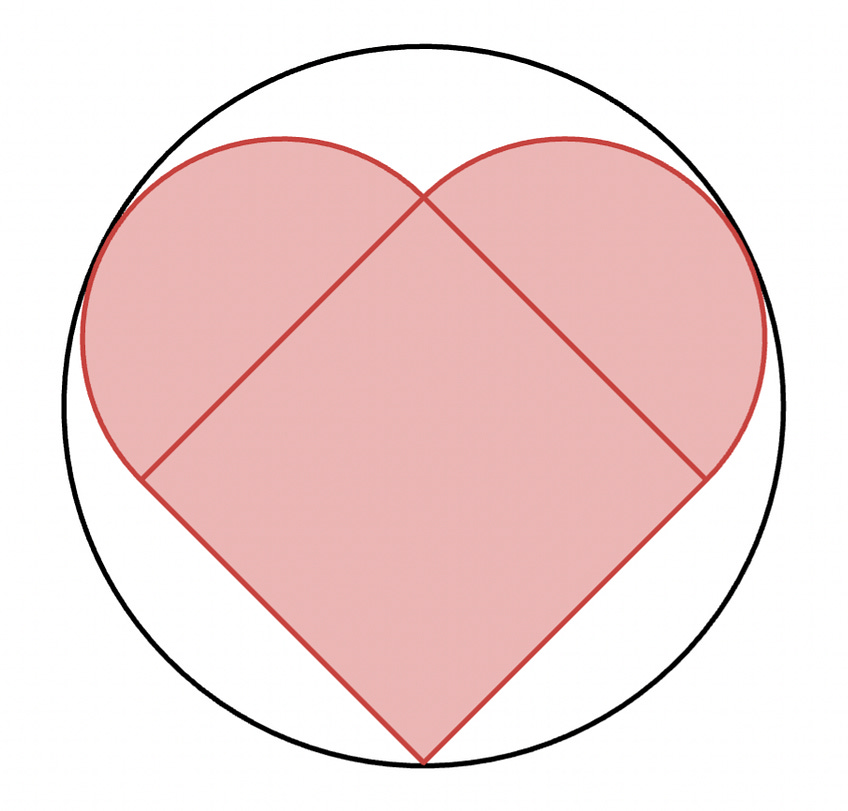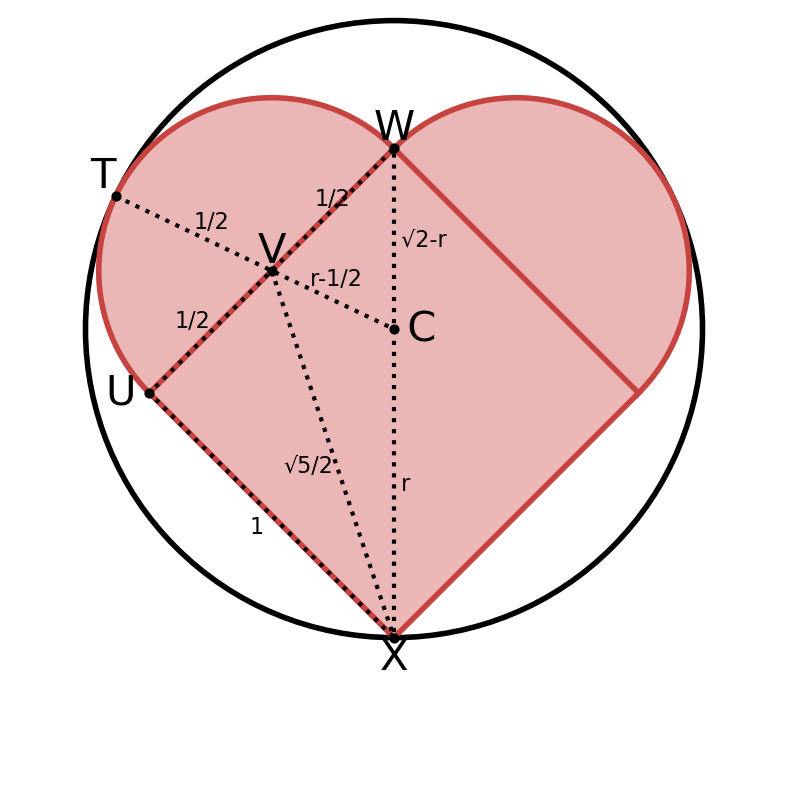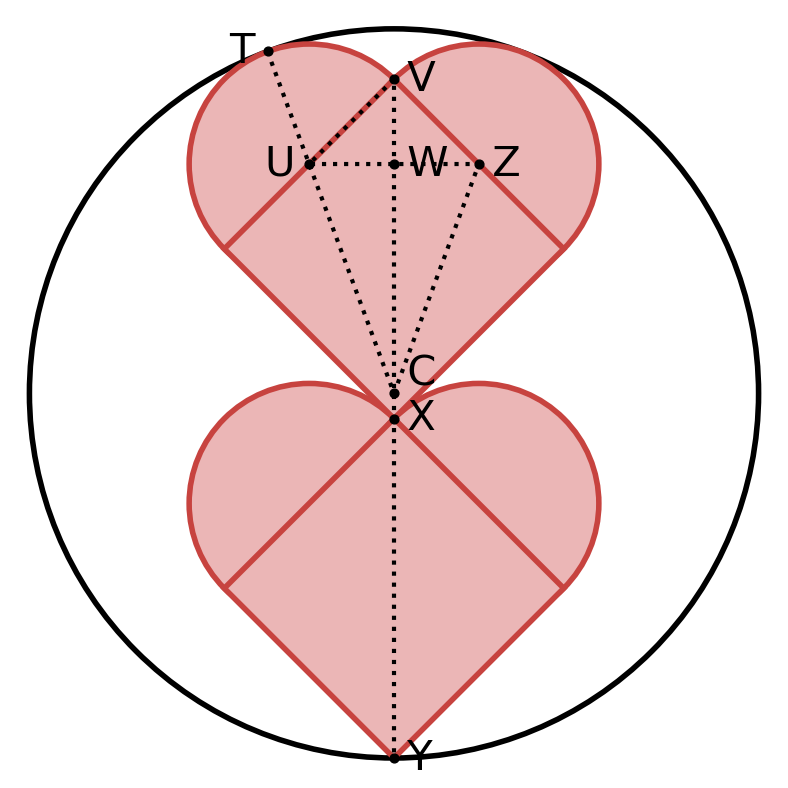Because of symmetry, $\bigtriangleup CUT \cong \bigtriangleup CVW$.
$UX = \frac{1}{2}$, $TW = UY = XY = \frac{1}{\sqrt{8}}$, and $CT = CW = \frac{1}{\sqrt{32}}$.
$UT = WY$.
\begin{align*}
UT^2 &= CU^2 - CT^2 \\
WY &= \sqrt{\left(\frac{1}{2}\right)^2 - \left(\frac{1}{\sqrt{32}}\right)^2} = \sqrt{\frac{7}{32}} \\
\end{align*}
$\bigtriangleup CWZ$ (radius $CZ$ not drawn),
\begin{align*}
CZ^2 &= WZ^2 + CW^2 \\
r^2 &= (WY + YZ)^2 + CW^2 \\
r^2 &= \big(UT + (XZ-XY)\big)^2 + CW^2 \\
r &= \sqrt{\left(\sqrt{\frac{7}{32}} + \left(\sqrt{2}-\frac{1}{\sqrt{8}})\right)\right)^2 + \left(\frac{1}{\sqrt{32}}\right)^2} \\
r &= \sqrt{\left(\sqrt{\frac{7}{32}} + \left(\frac{3}{\sqrt{8}}\right)\right)^2 + \left(\frac{1}{32}\right)} \\
r &= \sqrt{\left(\frac{6+\sqrt{7}}{\sqrt{32}}\right)^2 + \frac{1}{32}} \\
r &= \sqrt{\frac{36+12\sqrt{7}+7+1}{32}} \\
r &= \boxed{\frac{\sqrt{22+6\sqrt{7}}}{4} \approx 1.5385}\\
\end{align*}
This also is not optimal.




